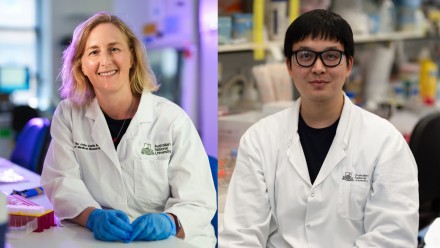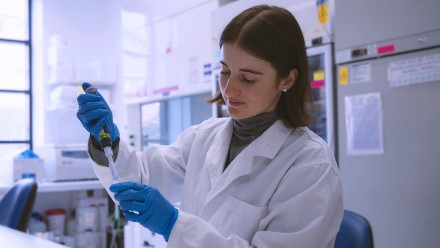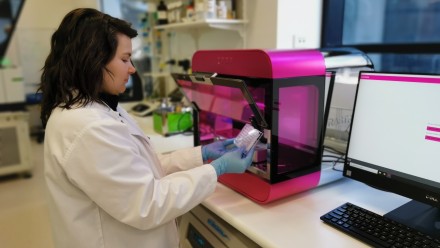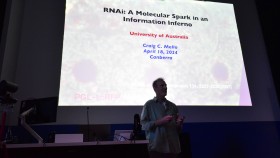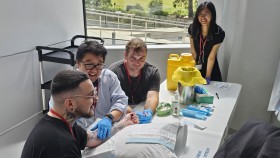Cancer research improves in three dimensions
Whilst there have been improvements in the survival rate for many cancers over the last 20 years, unfortunately, for many cancers, patient outcomes are still poor.
It is difficult to assess the efficacy of cancer treatments without physiologically relevant tumour models.
Dr Amee George, Manager of the ANU Centre for Therapeutic Discovery, hopes to change the availability of physiologically relevant tumour models for researchers in Canberra, using 3D printing technology.
“Traditional methods for cancer drug discovery utilise 2D cell culture models, which in many instances do not faithfully recapitulate the complex nature and organisation of some tumour types.”
“There are some tumour cells we can grow directly on a plastic surface, which we refer to as a 2D cell culture model of disease.” Explains Dr George, who is a Research Fellow within the ACRF Department of Cancer Biology and Therapeutics
“But for many other cancer types, particularly those which have been difficult to treat clinically, they will not easily grow in a normal tissue culture plate.”
“This is because they don’t have the right environment to promote growth or maintain the characteristics of that tumour type”
“When testing drugs and identifying potential therapeutic molecules, sometimes what we observe in 2D cell cultures doesn’t translate well when testing the same molecules in 3D or in pre-clinical models of disease”
“This can slow the rate of drug discovery for some of these hard to treat tumours.”
The recently installed RASTRUM 3D cellular bioprinter, allows 3D printing of cells specifically for drug discovery and high-throughput (HTP) analysis, which aims to solve the problem of researching cancer in 2D.

Image: 3D brain organoids built using the RASTRUM 3D cellular bioprinter.
“The first thing that we have done with the printer is print some lung cancer cells into plates and allowed them to form ‘mini tumours’.”
“We can treat these ‘mini tumours’ with different drugs or drug combinations to determine whether we can prevent the tumour from growing. Or kill off the tumour entirely.”
“We can image using sophisticated microscopy techniques and quantify these changes using computational analysis” says Dr George.
“We can also increase the complexity by adding other cell types into the printing process to tune the tumour microenvironment, including immune cells or supporting cells, and from this, determine what effect treatments have on the tumour or the other cells within that environment.”
“The 3D printing process can be applied to all sorts of cells and tumour types.”
Associate Professor Leonie Quinn is currently using the 3D technology to study brain tumours.
“The instrument will enable generation of 3D brain organoids “mini brains” to identify the more suitable drug candidates, which we will fast-track to pre-clinical and clinical testing to improve brain cancer patient outcomes” said Professor Quinn.
The ANU Centre for Therapeutic Discovery (ACTD) is a state-of-the-art robotic and liquid handling facility, used for conducting cancer research at Australia’s national medical research institute. The RASTRUM 3D cellular bioprinter by an instrument developed by the Australian-owned Sydney-based biotech company Inventia Life Sciences is a machine that prints highly reproducible 3D cellular structures in a format which is suitable for high-throughput screening within the ANU Centre for Therapeutic Discovery. It has been purchased using funds from the Ian Potter Foundation and the Medical Advances Without Animals (MAWA) Trust Funding. It is available for use, contact amee.george@anu.edu.au or actd.brf@anu.edu.au for more information.





